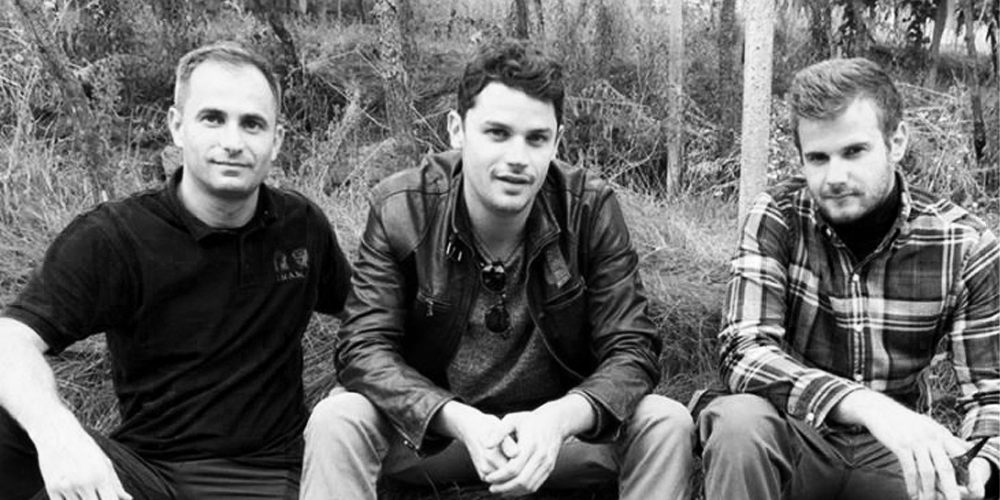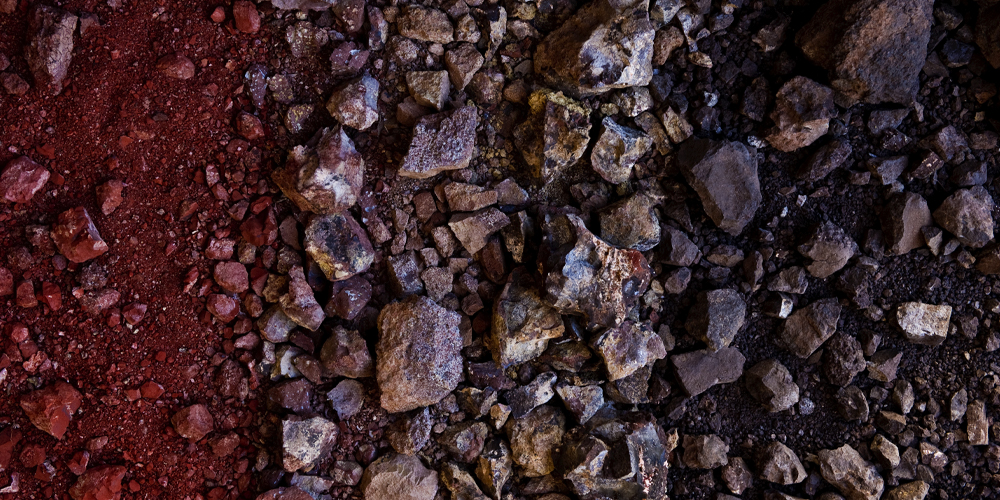The “Red Horizon” in our vineyards on Mount Foscarino; photo by Giò Martorana. The different colors show different degrees of ferrous oxidation of the igneous basalts that are typical of this hill.
THE “CRUS” OF SOAVE CLASSICO: A BRIEF HISTORY OF OUR COMPLEX TERROIR
The historic area of Soave production, referred to by the term “Classico”, is one of the oldest zones under vine in Italy. This region was already noted by the ancient Romans due to its special characteristics: it consists of volcanic hills lying at the foot of the Prealps which, facing South, look down towards the Po Valley.
During 2019, the so-called Additional Geographical Units (i.e., the “Crus” of Soave) were given official status. This is an enormous step forward in a process that aims to leave behind the ghosts of a past spoilt by a quest to standardize production, celebrating instead the many different identities of this historic zone.
As in other top-quality regions such as the Moselle or Burgundy, the various sub-zones and the consequent characteristics of the wines made from them have now been officially recognized and defined from a topological point of view. In our company’s story – which began in the mid-60s with the first parcels of vineyard in what has historically been considered the finest “cru” of the area, Monte Foscarino, before continuing with a second “cru” whose characteristics were very different, but which had enormous potential, called “Carbonare” – we identify completely with a vision of wines that are capable of expressing the differences in a unique, inimitable terroir: Soave Classico.
But how did this area – so rich in history and wines – come to exist?
Taking a walk amid our vine rows in the company of Professor Federico Righetto, we talked in depth about the geological origins that lie behind the great complexity and unique nature of Soave Classico. Below, we summarize and share the notes we took, in the hope that they will be useful to wine lovers and students of our wines alike.
In very ancient times, before the continents drifted apart, our area was covered by a sea (the Tethys Ocean). This was not because the sea was higher than it is now, but because our zone lay below the level of the sea. From the point of view of tectonics (observation of the evolutions in the Earth’s crust: the convective shifts of the planet’s mantle caused the movement of the Earth’s plates), the movements that modified our landscape, as we see it today, took place over the course of hundreds of millions of years. The plates’ rate of movement is very slow: they move around 2 cm a year, so in a thousand years they move about 2 meters, and in a million years roughly 2 km.
Italy is part of the African plate, which tends to get closer to the Eurasian one. The Prealps, and therefore the Lessini Mountains of Verona and also the hills of our zone, originated from the movement of the African plate shifting towards the north. Over the course of millions of years, their collision with the Alps – which in fact appeared a long time earlier – caused the land to rise, like a sheet of paper that arches over when pushed up against an obstacle. To the north, the obstacles were the Adamello and the Cima d’Asta, very hard granitic mountains.
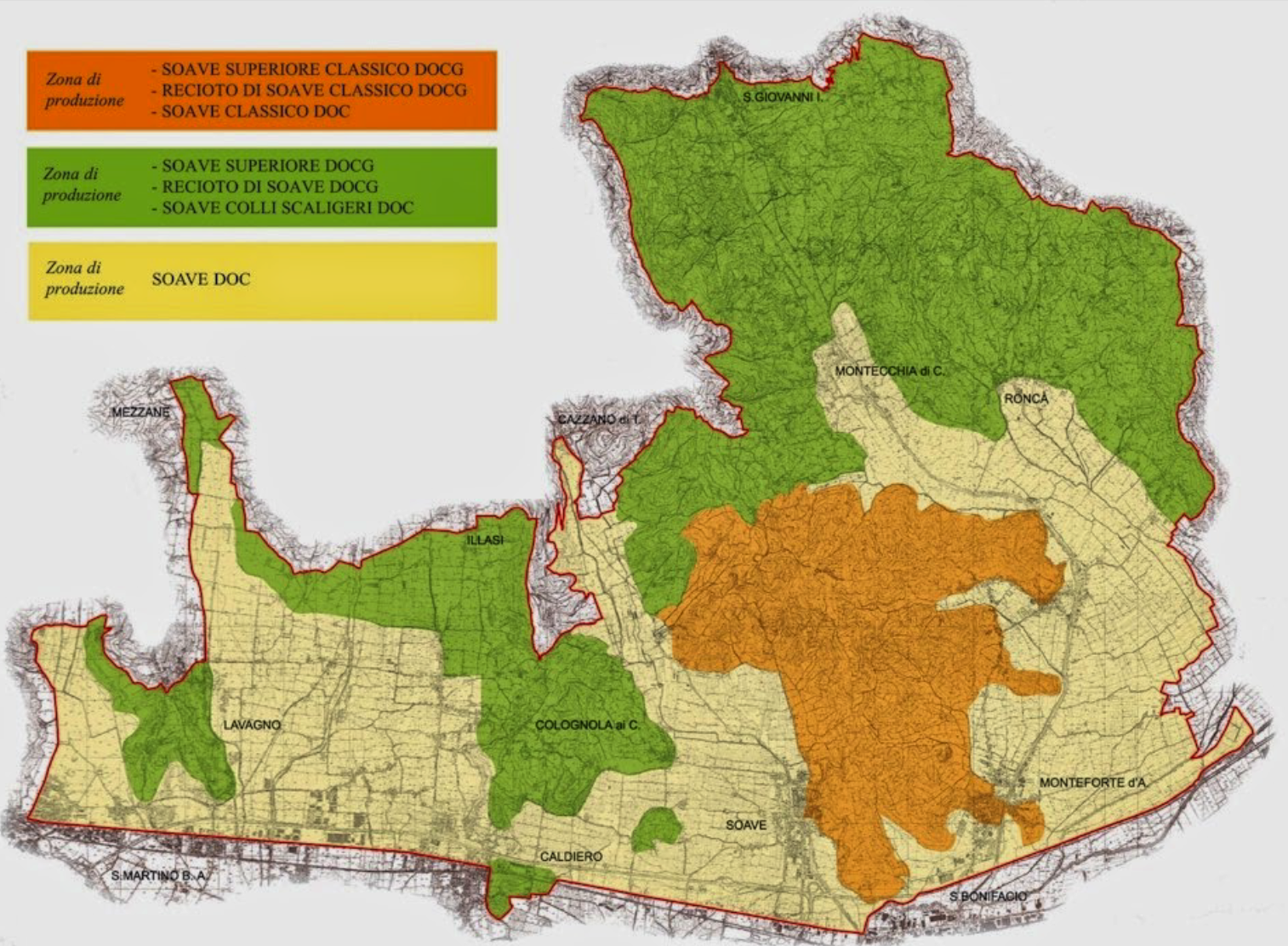
In orange, the historic Soave Classico area.
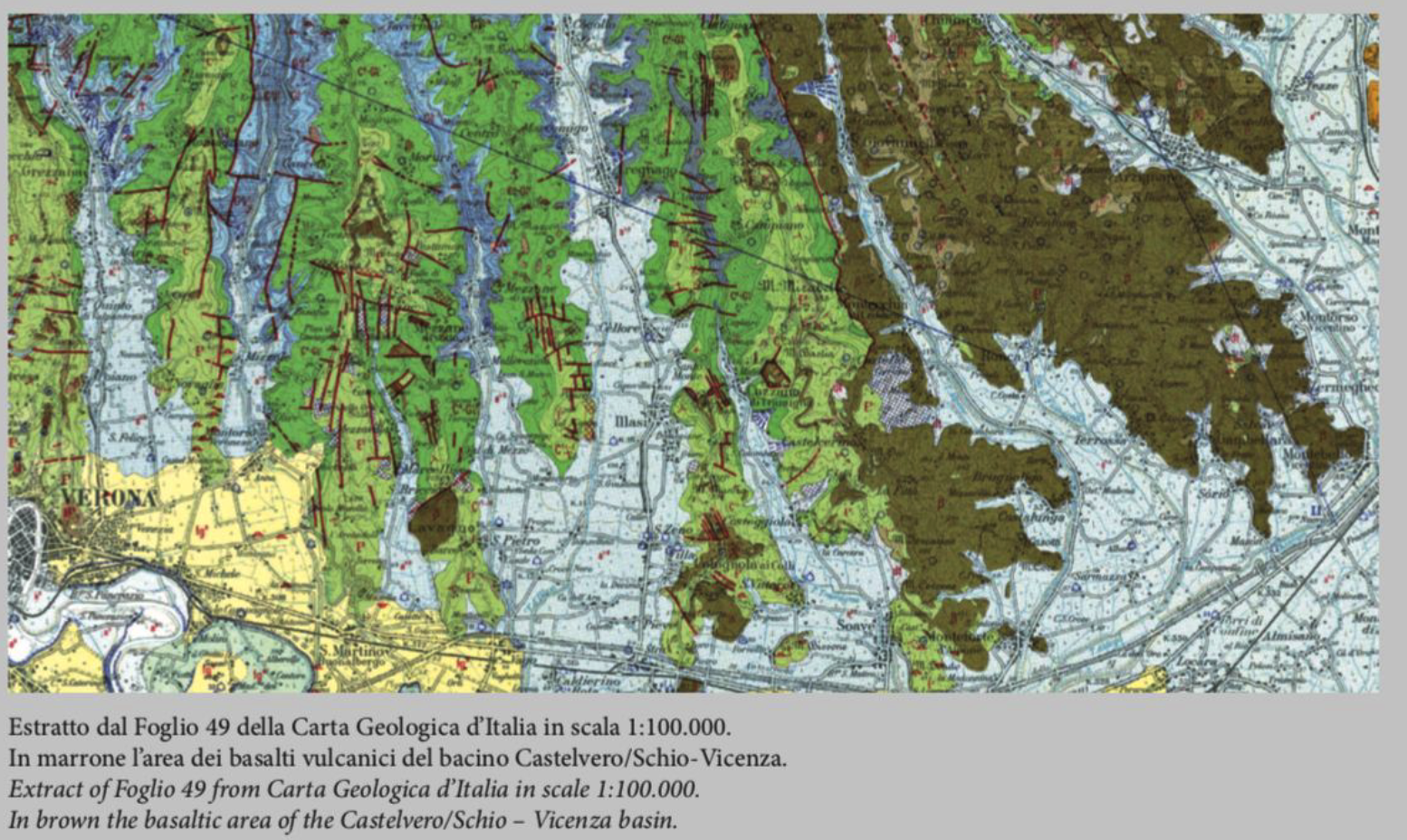
In this geological map one can see Soave Classico near the bottom, and the division caused by the Castelvero fault: to the west the calcareous sediments (in green) and to the east the volcanic soils (in brown).
The material of which the Prealps are mainly composed is sedimentary rock. On the ancient bed of the Tethys Ocean, materials transported by the rivers accumulated over the course of time. These muds, under the weight of the water, gradually compacted, mixing with the calcium carbonate (CaCO3) present in sea salt, which took the form of pure crystals following the evaporation of the water. The carbonate, mixing together with the sands, formed various types of calcareous rocks: from pure clay, made up of just the finest parts of the detritus, to marl (50% CaCO3, 50% clay) or even (very rare) pure limestone.
The Fault of Castelvero is very important in order to understand the origins of Soave Classico. The fault was in fact a rift in the Earth’s crust (this is very thin – barely 30 km deep – and below it runs the mantle in which the magma flows) and it divides our area in two. To the east of the fault there is a depression (graben). When, at a certain point around 60 million years ago, a series of volcanic activities took place in the area along the fault, the volcanic material poured down into the graben, covering it in a layer of igneous substances. Therefore, at the westerly end of the fault one observes calcareous deposits, whereas to the east there are outcrops of volcanic rock, as can be seen on the geological map below. Finally, around 23 million years ago, the volcanic activity started to come to a standstill.
It is, therefore, important to understand that the Soave Classico area is not completely volcanic but is in fact divided in two by the fault. Our vineyards are all situated in the volcanic zone.
However, not all basaltic magmas are alike, but may be of two kinds: acidic or basic, depending on the quantity of silica present. Ours are of the basic type, that is to say with a low silica content (around 40%). This is a very fluid magma, capable of flowing and moving, whereas an acidic magma is very dense and does not move much. Depending on the zone, there can be different types of igneous rocks, such as pyroxenes and plagioclases (rich in calcium, sodium and potassium), or olivine (rich in aluminum, iron and magnesium). Over millions of years, these rocks then transformed themselves into clayey soil, made up of very fine particles that are capable of retaining water, but which are very rich in minerals.
In our vineyards one can find various types of volcanic rocks: some, deriving from the volcanic chimneys, are very compact. Immediately after the eruption, in fact, sea water entered into the volcanic chimney, violently cooling down the material which, because of the thermal shock and the pressure, compacted very quickly and broke into prisms. The lava that was expelled from the volcano, on the other hand, can be identified by the presence of bubbles, remains of the gases that were liberated during the eruption. Then there is the ash, normally gray in color, which easily degrades into organic clayey composts, directly absorbed by the roots of the vines.
Thanks to the improvements in our “organic” approach and to our identification of micro-zones, the differences between each vineyard have become more marked when we taste the grapes. In the course of our work in the last few years, we have carried on in our humble quest for detail in order to further our knowledge of our terroir and so offer our clients wines that are precise and unique. In our philosophy of production, we have always asked ourselves – in an intellectually honest way – a whole series of questions as how best to express the characteristics of each “cru”. Year after year we try to quench our thirst for knowledge and we continue to gain a better understanding of the characteristics of each vineyard plot, working with obsessive sensibility and highlighting the important differences between them.
We therefore express “our” Soave Classico through four wines:
- Vin Soave represents our most immediately appealing version of Soave Classico: fresh and well-balanced, it comes from those vineyards that we have not selected for our “cru” labels. Our vititiculture is nevertheless of very high quality and highlights the natural biological complexity in the vineyards through low yields and complete ripeness of the grapes. In this way we can offer an entry-level wine that is already able to express the greatness of our terroir. A brief maceration on the skins, followed by malolactic fermentation and maturation in stainless steel for 6 months, results in a fine everyday wine, a little luxury to be enjoyed whenever you want.
- Vigneti di Carbonare is the latest release from the Inama winery, and is undoubtedly a result of the interpretation of the youngsters in the third generation: 40-year-old vines in a single vineyard that faces east, on a very sheltered hillside and rich in water deep below the surface. Here the grapes, when tasted, have high acidity and citrus fruit notes and, after a light maceration on the skins, the wine remains in stainless steel for twelve months on its fine lees without undergoing malolactic fermentation, so as to highlight the firm, acidulous/mineral vein that is the real essence of this vineyard. This produces a crisp, lively wine with floral notes and citrusy sensations, which is ideal for aging. We use specially selected, odor-free corks.
- Vigneti di Foscarino is our historic label and is the wine that best represents the balance and rounded mellowness of Soave Classico. Our vineyards, which are around fifty years old, form a magnificent fan from East, to South, to West. Monte Foscarino can be seen from every angle of the plain below and is the point of reference – the real heart – of Soave Classico. After methodically tasting the grapes, each year we select the vineyards that are most expressive in that particular vintage. After a maceration on the skins that can last as long as twelve hours, in neutral French oak barriques – used for the second to fifth time – some lots of grapes undergo malolactic fermentation, others do not. Remaining on its fine lees, with bâtonnage every three weeks, the wine becomes fatter and attains that well-balanced richness on the nose and palate that only great wines succeed in having. After the final blend, another six months in stainless steel ensure that the wine expresses itself in a perfect manner. We use specially selected, odorfree corks.
- Vigneto Du Lot is the finest expression of the Foscarino “cru”. Each year we seek out the batch of grapes which, in that vintage, has the most complexity and fullness of flavor; to do so we select the ideal plot of vines, usually lying on the western slope of the hill, where the afternoon sun allows the grapes to attain incredible concentration. The wine follows the same procedure as the Vigneti di Foscarino, but this time 30% of the barriques will be of new oak. This gives rise to an expression of Soave Classico that is a world away from that image of an anonymous wine which has destroyed this region’s name in the past, and instead inebriates one’s senses with rich sensations. We use specially selected, odor-free corks.
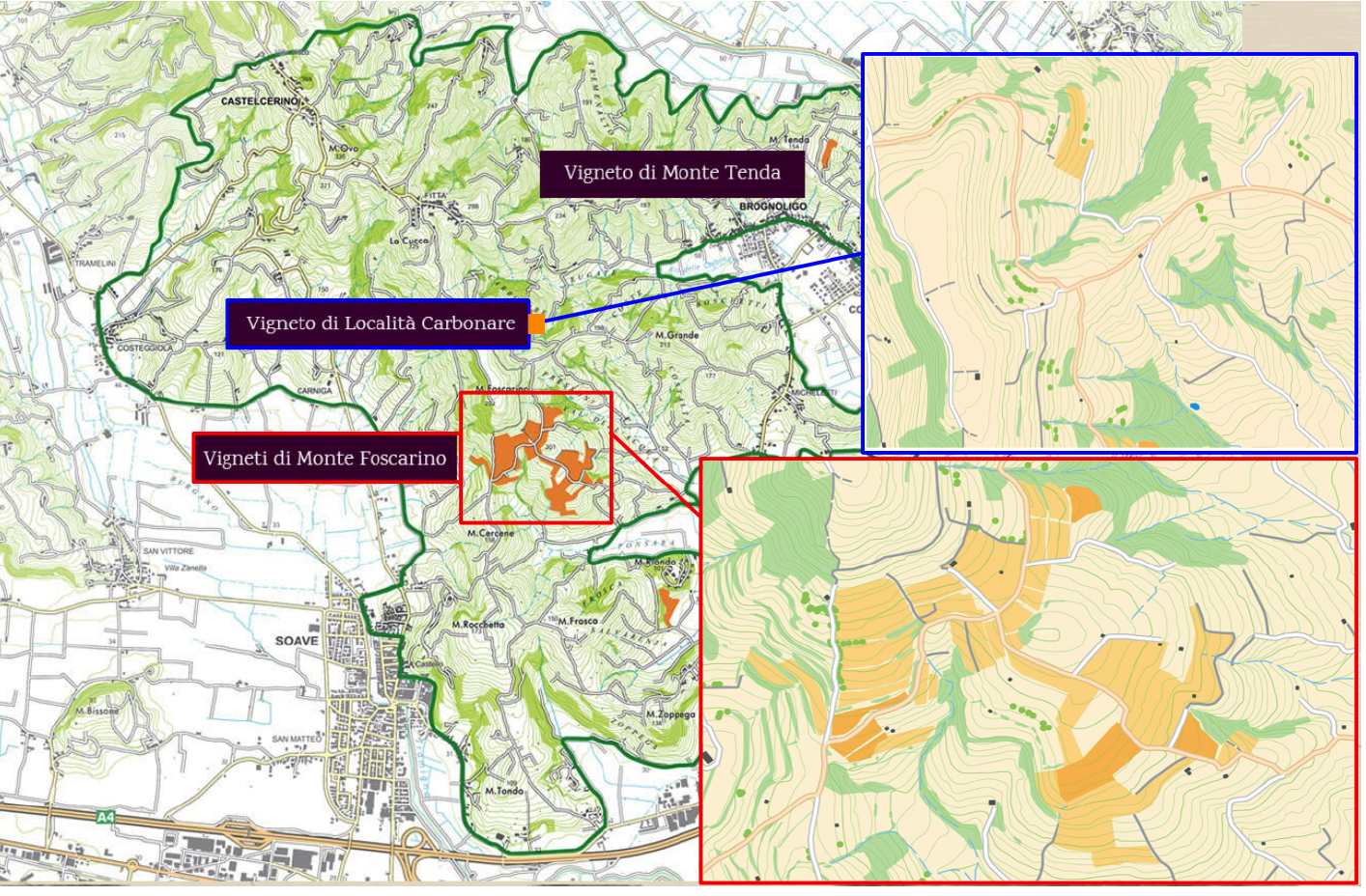
Our “Crus” in Soave Classico: Foscarino and Carbonare
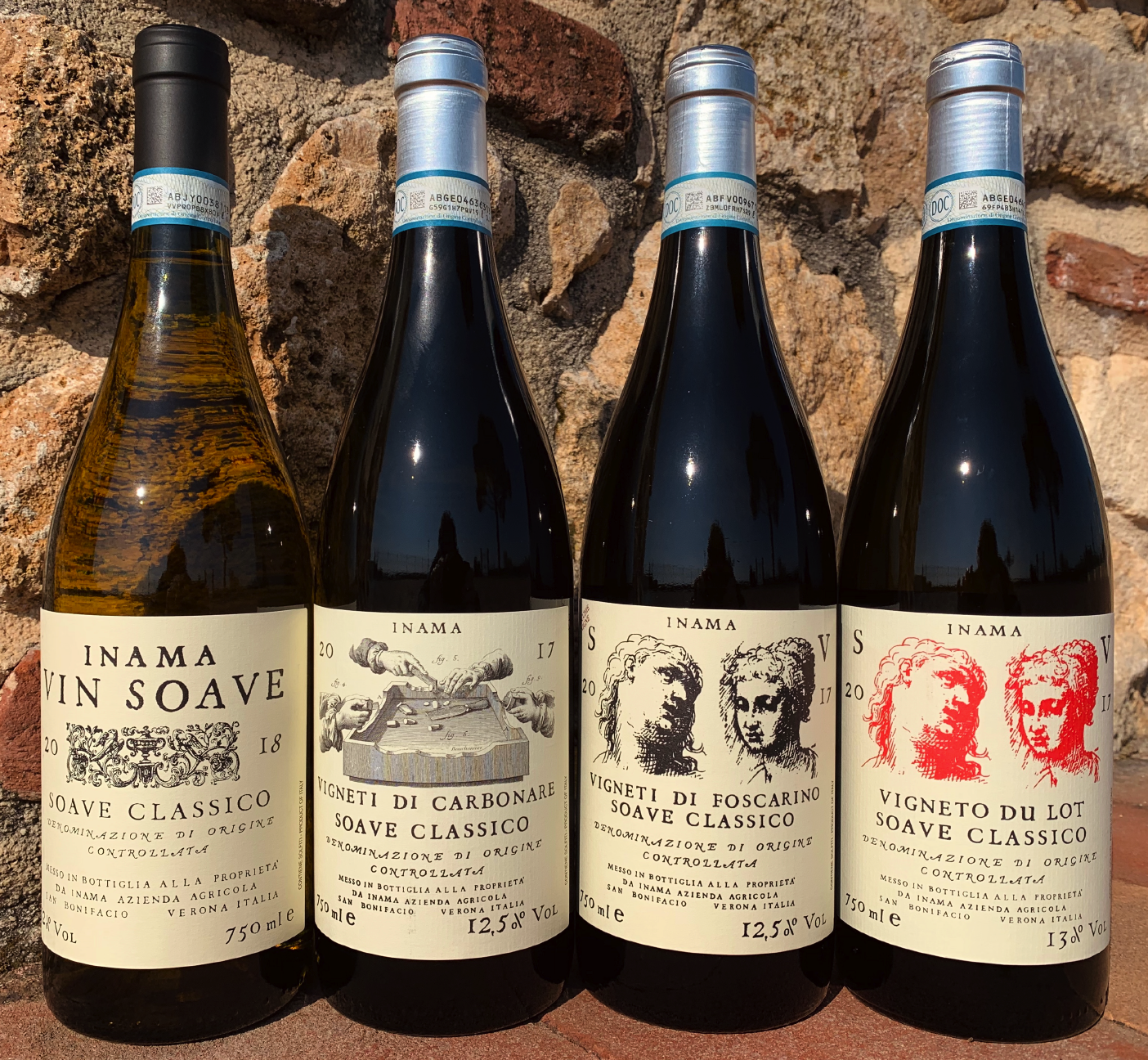
Our four expressions of Soave Classico

